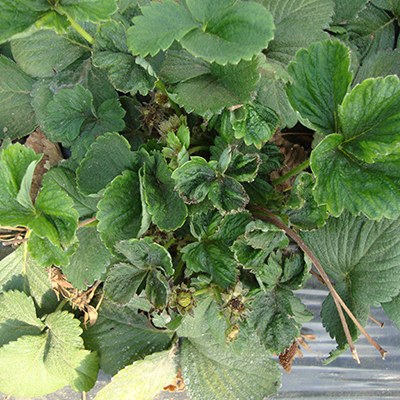Broad Mite (Polyphagotarsonemus latus)
 These tiny mites can cause immense damage to plants, and yet are difficult to see, and often not present on the leaves that show the damage symptoms. This is because they occur in the very middle of the growing point of the plant, where new leaves are being formed but have not yet expanded. They feed on this delicate leaf tissue, and as the leaf expands it becomes distorted. Some types of plants show less distortion, but affected leaves often appear glossy and discoloured.
These tiny mites can cause immense damage to plants, and yet are difficult to see, and often not present on the leaves that show the damage symptoms. This is because they occur in the very middle of the growing point of the plant, where new leaves are being formed but have not yet expanded. They feed on this delicate leaf tissue, and as the leaf expands it becomes distorted. Some types of plants show less distortion, but affected leaves often appear glossy and discoloured.
Heavily infested plants can become severely distorted, and infestation can rapidly spread through a crop from an initial focus.
The pest can be controlled biologically with high doses of Amblyline (Amblyseius cucumeris) or Anderline (Amblyseius andersoni) applied onto and around the foci of infestation. Lower rates must be applied around the area of visible damage, as the pest is almost certainly present in lower numbers, even when no damage is yet apparent. Californiline (Amblyseius californicus) has also been shown to offer control, but this is not available for use on outdoor crops in some countries.
